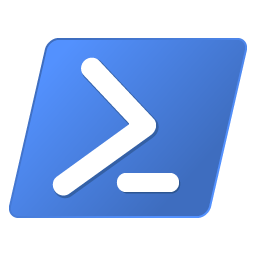Address
304 North Cardinal St.
Dorchester Center, MA 02124
Work Hours
Monday to Friday: 7AM - 7PM
Weekend: 10AM - 5PM

Here is how you can verify whether an external command in PowerShell was executed successfully or not by checking its errorlevel. Simply by verifying the PowerShell exit code using the $? operator or $LASTEXITCODE.
The terms exit code, return value or ErrorLevel can be used interchangeably.
The PowerShell operator $? contains True if the last operation succeeded and False otherwise.
# source:
# http://blogs.msdn.com/b/powershell/archive/2006/09/15/errorlevel-equivalent.aspx
if( $? ) {
# True, last operation succeeded
}
if( !$? ) {
# Not True, last operation failed
}To illustrate PowerShell’s $? usage, have a look at the following DISM Cleanup-Image command. In my Windows Server disk cleanup using DISM blogpost, I’ve shown you how to clean up your Windows Server WinSxs folder with DISM.
Those commands are easily wrapped into a PowerShell script, and here it is:
$os_version = [System.Environment]::OSVersion.Version
# The above returns 6.3.9600.0 for Server 2012 R2 or
# 10.0.14393.0 for Server 2016. Server 2012 matches
# 6.2.9200.0, and so on.
#
# See https://msdn.microsoft.com/nl-nl/library/windows/desktop/ms724832(v=vs.85).aspx
# for more information about Windows Server versions.
$cleanup = $false
# Always be careful comparing strings and integers!
if( $os_version -ge ( New-Object System.Version "10.0" )) {
# $os_version is greater than, or equal to "10.0", so
# this is Windows Server 2016 or higher.
}
if( $os_version -ge ( New-Object System.Version "6.3" ) -And $os_version -le ( New-Object System.Version "10.0" )) {
# $os_version is greater than 6.3 and smaller than 10.0,
# therefore this must be Windows Server 2012 R2
&dism.exe /online /Cleanup-Image /StartComponentCleanup /ResetBase | Write-Output
if( $? ) {
# dism cleanup-image was successful, set variable to True
$cleanup = $true
}
}
if ( $cleanup ) {
# Dism.exe was executed
Write-Host "[*] System going down for reboot in 3 seconds!"
&shutdown /r /f /t 3
} else {
# an error occurred
Write-Host "[*] Something went wrong with DISM and Cleanup-Image, `
please perform the actions by hand."
}Suppress error messages in PowerShell like a pro 🙂 If you don’t want to display PowerShell errors completely, you can wrap your PowerShell commands in a Try{} / Catch{} block. For example:
Get-Website | % {
$sitename = $_.name;
try{
$handlers = Get-WebConfiguration /system.webServer/handlers/add -Location $sitename
If( $handlers.scriptProcessor -like "x:\php73\php-cgi.exe*" ) {
write-output "$sitename uses PHP 7.3"
&appcmd.exe recycle apppool $sitename
# Restart-WebAppPool $sitename
}
}
catch {}
}This checks the registred handler to see if scriptProcessor contains x:\php73\php-cgi.exe*. If so, recycle that website’s application pool (assuming the website and apppool names are the same).
By using a Try{} / Catch{} block, you don’t see the PowerShell errors like:
Get-WebConfiguration : Filename: ?\z:\sites\www\example.com\www\web.config
Line number: 14
Error: There is a duplicate 'system.web.extensions/scripting/scriptResourceHandler' section defined
At line:3 char:13
$handlers = Get-WebConfiguration /system.webServer/handlers/add -Loca …
~~~~~~~~~~~~~ CategoryInfo : NotSpecified: (:) [Get-WebConfiguration], COMException
FullyQualifiedErrorId : System.Runtime.InteropServices.COMException,Microsoft.IIs.PowerShell.Provider.GetConfigu
rationCommandThe PowerShell $LASTEXITCODE should be 0, since $LASTEXITCODE contains the exit code of the last Win32 executable execution. $LASTEXITCODE the equivalent to cmd.exe %ERRORLEVEL%, and you can use it as follows in your PowerShell scripts:
&dism.exe /Online /Cleanup-Image /StartComponentCleanup /ResetBase
if( $LASTEXITCODE -eq 0 ) {
Write-Output "Command executed successfully"
# do something, like `Restart-Computer -Force`
} else {
Write-Output "Last command failed"
}